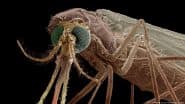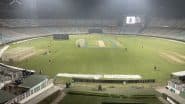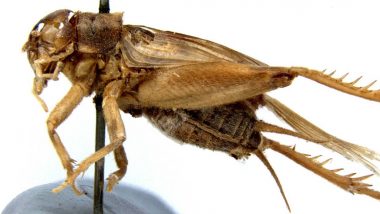More than a year ago, American news media reported that the US government was investigating a possible sonic attack on its diplomats based in Cuba as these US officials reported a range of physical discomfort symptoms like dizziness, headaches and ringing in the ears. The US government moved its diplomats out of Cuba and even launched a probe into this episode.
Months have passed with Cuba denying this accusation by the U.S. and no concrete proof turning up of any such possible acoustic device used to carry out such an attack. Now, scientists who have analysed an audio recording of the sound that caused so much distress to the US diplomats, say that this troubling sound is the mating call of a particular species of crickets found in Cuba.
In a report released a few days ago, scientists say the audio recordings of the ‘sonic attack’ matches the Indies short-tailed cricket, Anurogryllus celerinictus. The cricket's chirps matched "in nuanced detail, the AP recording in duration, pulse repetition rate, power spectrum, pulse rate stability, and oscillations per pulse."
Fernando Montealegre-Zapata, a professor of sensory biology at the University of Lincoln and one of the researches who was the author of this report explained, “The call of this Caribbean species is about 7 kHz, and is delivered at an unusually high rate, which gives humans the sensation of a continuous sharp trill.”
From the reports around the time of the ‘sonic attack’ there are inconsistencies in the kind of sound that created the physical discomfort in the US diplomats. Some recalled high-pitched grinding sounds, while others said they experienced buffeting sounds like that caused by an open car window. These diplomats were brought back to the US and doctors at the University of Pennsylvania ran tests on them. The UPenn team concluded that some of these diplomats had suffered concussion-like injuries but these conclusions were challenged.
Hence, scientists took the audio recordings and played them indoors where the diplomats were said to have experienced them. They said playing the crickets' call on a loudspeaker when recorded indoors produced a sound "virtually indistinguishable" from the alleged sonic attacks. "This provides strong evidence that an echoing cricket call, rather than a sonic attack or other technological device, is responsible for the sound in the released recording," the researchers said.
They added that their findings highlighted the need for "more rigorous research" into the source of the injuries suffered by embassy staff, including potential psychological causes.
(The above story first appeared on LatestLY on Jan 08, 2019 12:08 PM IST. For more news and updates on politics, world, sports, entertainment and lifestyle, log on to our website latestly.com).













 Quickly
Quickly





















